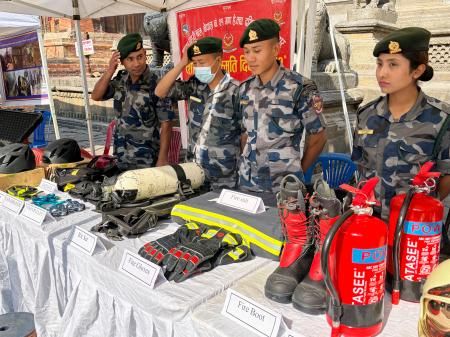Ten Years On: Nepal Earthquake's Legacy – Resilience, Reconstruction, and Remaining Challenges
Ten years after the devastating 2015 Nepal earthquake, the nation continues its journey of recovery and rebuilding. The 7.8 magnitude quake, and subsequent aftershocks, left a scar on the landscape and the hearts of the Nepali people, claiming thousands of lives and causing widespread destruction. While significant progress has been made, the earthquake's legacy remains a complex tapestry woven with threads of resilience, reconstruction, and persistent challenges.
A Decade of Recovery: Progress and Setbacks
The immediate aftermath of the earthquake saw an outpouring of international aid and a surge of humanitarian efforts. Emergency relief, search and rescue operations, and the provision of essential supplies were crucial in the initial stages. However, the long-term process of reconstruction proved far more intricate.
Key Achievements:
- Housing Reconstruction: While initially slow, the government's housing reconstruction program has made significant strides, with many homes rebuilt to withstand future seismic activity. The program's success, however, has been uneven across different regions and communities. Learn more about the housing reconstruction program's challenges and successes here: [Link to relevant article/report]
- Improved Building Codes: The earthquake highlighted the urgent need for stricter building codes and improved infrastructure. Nepal has since implemented revised building regulations aimed at enhancing earthquake resilience in new constructions. [Link to updated building codes]
- Enhanced Disaster Preparedness: The devastating experience spurred significant investment in disaster preparedness and response mechanisms. Improved early warning systems and community-based disaster risk reduction initiatives are now in place.
- Tourism Recovery: Although the earthquake dealt a blow to Nepal's vital tourism sector, it has gradually rebounded, albeit with a focus on sustainable and responsible tourism practices. [Link to article on Nepal's tourism recovery]
Ongoing Challenges:
- Incomplete Reconstruction: Despite considerable progress, a significant number of homes and infrastructure projects remain unfinished, leaving many vulnerable. Factors such as bureaucratic hurdles, funding constraints, and land ownership disputes have hampered the reconstruction efforts.
- Economic Impact: The earthquake’s long-term economic impact continues to be felt, particularly in rural communities heavily reliant on agriculture and tourism. Poverty levels remain high in many affected areas.
- Psychosocial Impacts: The trauma caused by the earthquake continues to affect survivors. Access to mental health services remains limited, highlighting the need for sustained psychosocial support.
- Vulnerability to Future Earthquakes: Nepal remains highly vulnerable to future seismic activity, underscoring the importance of continued investment in earthquake-resistant infrastructure and community preparedness.
Remembering the Victims and Celebrating Resilience
The 2015 Nepal earthquake was a devastating tragedy, but it also showcased the remarkable resilience of the Nepali people. Their unwavering spirit in the face of adversity inspired the world. Remembering the victims and honoring their memory remains crucial, while simultaneously celebrating the progress made in the decade since the quake.
Looking Ahead: Building a More Resilient Future
The legacy of the 2015 Nepal earthquake serves as a powerful reminder of the importance of disaster preparedness, robust infrastructure, and sustainable development. The ongoing challenges underscore the need for continued international support, government commitment, and community engagement to build a more resilient and prosperous future for Nepal.
Call to Action: Learn more about organizations working on earthquake recovery in Nepal and consider supporting their efforts. [Link to relevant organizations]
